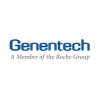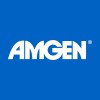
Fludarabine Phosphate, Melphalan, Total-Body Irradiation, Donor Stem Cell Transplant in Treating...
Accelerated Phase Chronic Myelogenous LeukemiaAcute Myeloid Leukemia With Multilineage Dysplasia Following Myelodysplastic Syndrome100 moreThis clinical trial is studying how well giving fludarabine phosphate and melphalan together with total-body irradiation followed by donor stem cell transplant works in treating patients with hematologic cancer or bone marrow failure disorders. Giving low doses of chemotherapy and total-body irradiation before a donor peripheral blood stem cell transplant helps stop the growth of cancer cells or abnormal cells. It may also stop the patient's immune system from rejecting the donor's stem cells. The donated stem cells may replace the patient's immune cells and help destroy any remaining cancer or abnormal cells (graft-versus-tumor effect)

A Study Evaluating GDC-0980 Administered Once Daily in Patients With Refractory Solid Tumors or...
Non-Hodgkin's LymphomaSolid CancersThis is an open-label, multicenter, Phase I study to evaluate the safety, tolerability, and pharmacokinetics of escalating oral doses of GDC-0980 administered to patients with incurable, locally advanced or metastatic solid malignancy or NHL that has progressed or failed to respond to at least one prior regimen or for which there is no standard therapy.

Study to Evaluate the Efficacy and Safety of Subsequent Treatment With the Zevalin (Ibritumomab...
Follicular LymphomaStudy phase: Phase II Investigational product, dosage, and route of administration: Ibritumomab tiuxetan (Zevalin) is composed of a murine IgG1 monoclonal antibody (ibritumomab) covalently bound to the chelating agent tiuxetan. To prepare the active therapeutic agent [90Y]-ibritumomab tiuxetan, the antibody is chelated with the β-emitter yttrium-90 chloride immediately before intravenous administration. Treatment with [90Y]-ibritumomab tiuxetan is preceded by an infusion of rituximab (Rituxan, Mabthera) in order to optimize the biodistribution of radiolabeled antibody by depleting CD20 positive B-cells. Rituximab is a chimeric human/murine IgG1 monoclonal antibody. The Zevalin study regimen is given as an infusion of rituximab 250 mg/m2 and (where biodistribution imaging or dosimetry is compulsory) 185 MBq (5mCi) of [111In]-ibritumomab tiuxetan on Day 1 followed 7 to 9 days later by a single dose of 14.8 MBq/kg (0.4 mCi/kg) of [90Y]-ibritumomab tiuxetan, maximal dose of 1184 MBq (32 mCi), preceded by 250 mg/m2 of rituximab. Indication: stage II-IV follicular lymphoma (FL) grade I-II after 4 cycles of FMR Study objectives: Evaluation of efficacy and safety of [90Y]-ibritumomab tiuxetan, as well as assessment of quality of life Patient population: Patients with after 4 cycles of treatment with FMR Study design: Prospective, multicenter, open-label study designed to treat patients with a sequential front-line treatment represented by 4 cycles FMR plus Zevalin Duration of treatment: Four months for FMR and two treatment days one week apart followed by a 12-week safety period for Zevalin Duration of study: Estimated duration of study is 18 months Primary efficacy parameter: Overall response rate and complete response rate Secondary efficacy parameters: Overall survival, Disease-free survival, health-related quality of life. Safety parameters: Vital signs, adverse events (AEs), hematology, blood chemistry,and immunoglobulin levels Number of study centers: 4 study centers in Italy T otal number of patients, statistical rationale provided: Expected total of 55 patients. The final sample size will be based on the number of events observed for the primary efficacy endpoint as calculated in the sequential statistical model. Adverse events: AEs observed, mentioned upon open questioning and/or spontaneously reported will be documented. Planned start and end of recruitment: Start of recruitment: 3rd quarter 2006. End of recruitment: 1st quarter of 2007

Phase II Study of Oral Panobinostat in Adult Participants With Relapsed/Refractory Classical Hodgkin's...
Classical Hodgkin's LymphomaThis study evaluated the efficacy of oral panobinostat in participants with refractory/relapsed classical Hodgkins lymphoma (HL) who have received prior treatment with high dose chemotherapy and autologous stem cell transplant. Safety of panobinostat also was assessed. Other markers that may correlate with efficacy or safety were explored.

Rituximab, Bortezomib,Bendamustine , Dexamethasone, Patients With Mantle Cell Lymphoma
LymphomaRATIONALE: Monoclonal antibodies, such as rituximab, can block cancer growth in different ways. Some block the ability of cancer cells to grow and spread. Others find cancer cells and help kill them or carry cancer-killing substances to them. Bortezomib may stop the growth of cancer cells by blocking some of the enzymes needed for cell growth and by blocking blood flow to the tumor. Drugs used in chemotherapy, such as doxorubicin, dexamethasone, and chlorambucil, work in different ways to stop the growth of cancer cells, either by killing the cells or by stopping them from dividing. Giving combination chemotherapy together with rituximab and bortezomib may kill more cancer cells. PURPOSE: This phase II trial is studying how well giving rituximab together with bortezomib, doxorubicin, dexamethasone, and chlorambucil works as first-line therapy in treating older patients with stage II, stage III, or stage IV mantle cell lymphoma.

Conditioning Regimen and the Transplantation of Unrelated Donor Umbilical Cord Blood in Patients...
LeukemiaMyelodysplastic Syndrome3 moreThe traditional way of doing a donor transplant is to give high doses of chemotherapy and radiation before giving the stem cells. However, high doses of chemotherapy and radiation can have serious side-effects. The doctors think that the transplant will be safer and more likely to be successful with reduced doses of chemotherapy and radiation. The purpose of this study is to find out how good a combination of chemotherapy and radiation at reduced doses followed by a cord blood transplant are at treating cancer. The stem cells chosen for the transplant are from umbilical cord blood. Umbilical cord blood is collected from healthy newborn babies and frozen. One cord blood collection is called a "cord blood unit." On transplant day, the cord blood will be given through the catheter just like a blood transfusion. Transplants done this way have been successful. However, this type of transplant is fairly new. Therefore, it is important to study it so the doctors can better understand how it works. Most blood or bone marrow transplants using donor stem cells are done as part of a study. When patients are on a study we test new ways of treating them which we think may be better than the old ways. We collect information about the result of this treatment so we can understand how well the treatment works. This is so we can learn better ways to treat our patients.

Veltuzumab and Milatuzumab in Treating Patients With Relapsed or Refractory B-Cell Non-Hodgkin Lymphoma...
LymphomaA phase I dose escalation study of veltuzumab and milatuzumab in relapsed and refractory B-cell NHL. The phase I study will be followed by a pilot phase II study.

Phase II Study of Ofatumumab Plus Ifosfamide, Carboplatin, Etoposide (ICE) or Dexamethasone, Cytarabine,...
LymphomaLarge-Cell1 moreThe purpose of this study is to evaluate the safety and efficacy of ofatumumab used in combination with ifosfamide, carboplatin, etoposide (ICE) or dexamethasone, cytarabine, cisplatin (DHAP) salvage chemotherapy regimens in subjects with relapsed or refractory diffuse large B cell lymphoma (DLBCL) who are eligible for autologous stem cell transplant.

Phase 1b Lymphoma Study of AMG 655 in Combination With Bortezomib or Vorinostat
Hodgkin's LymphomaLow Grade Lymphoma4 moreThis is a multi-center, phase 1b study of AMG 655 in combination with bortezomib or vorinostat in subjects with relapsed or refractory low grade lymphoma, mantle cell lymphoma, diffuse large cell lymphoma, and Hodgkin's disease. Part 1 is an open-label, dose-escalation phase (3+3 design) to determine the safety, tolerability and maximum tolerated dose of AMG 655 in combination with bortezomib or vorinostat. Subjects will be enrolled into one of two arms based on investigator selection (either the bortezomib + AMG 655 arm or vorinostat + AMG 655 arm). Part 2 of the study is a dose expansion phase that will commence after dose selection of AMG 655 in combination with bortezomib in Part 1. In Part 2, subjects (n = 20) with mantle cell lymphoma will be given AMG 655 in combination with bortezomib. The dose of AMG 655 used in combination with bortezomib will be based on safety and pharmacokinetic information obtained from Part 1 as well as from ongoing AMG 655 trials.

Stem Cell Mobilization With Pegfilgrastim in Lymphoma and Myeloma
LymphomaMyelomaThe purpose of this study is to evaluate the efficacy and tolerance of a single administration of Pegfilgrastim in patients with lymphoma or myeloma receiving high-dose chemotherapy and autologous peripheral stem cell support, and to estimate the costs incurred. Eligible patients will be randomized. The estimated inclusion period is approximately 18 months. The duration of the research is 22 months. The maximum duration of participation for each patient is 3 months. The number of patients required in this multicentric and prospective study is 150 (13 participating centers). This is a phase II, controlled, randomized, non comparative and open-label multicentric study.
